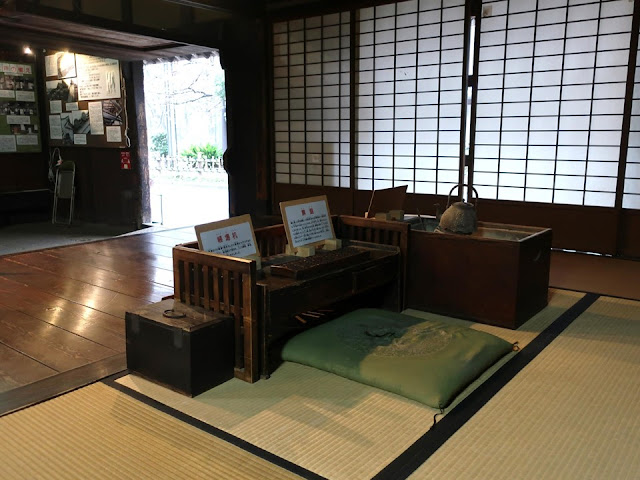This museum is located in Takatsuki which is between Kyoto and
Osaka, and it is just five-minute walk from Takatsuki-jo Castle Site Museumof History (my previous post). The building was the merchant Sasai’s
house which was built around 300 years ago.
I like the lovely utensils especially a kind of kettles called “Douko”.
There are various kinds of Douko here, and I can picture that people enjoyed using them,
高槻市立しろあと歴史館から約五分、江戸中期の商家(高槻市指定有形文化財「旧笹井家住宅」)を利用した資料館だ。マニアックだが、湯沸かし器の銅壺(どうこ)が、沢山あったのが驚きだった。銅壺でお燗をしながら時を過ごすことは、幸せなことだと思う。
 |
| Door with a hoisting device、上げ下げ式の大戸(おおと) |
 |
Layout of Sasano house; they sold dried
food at first, then, sold ceramics. They sell rice now.
干物、その後は瀬戸物、扱う商家の旧笹川家の間取り。今は米を商っているとのこと。
|
 |
| Entrance and the shop front、店の間と玄関 |
 |
| Zashiki, reception room. 十畳の座敷 |
 |
Exhibits of old everyday utensils
展示されていた昔の生活道具
|
 |
Douko kettle is inside the stove called “Naga(long)-hibachi(charcoal
brazier)”. It is written “You can make hot water, tea, sake(alcohol) and finger
food.
長火鉢の中の銅壺、「湯茶や酒肴を楽しめる」と書かれていた。
|
 |
| Utensils for eating、生活の用具(食) |
Three funs(楽fun)were found. Visited in December, 2018
Website: http://www.city.takatsuki.osaka.jp/rekishi_kanko/rekishi/rekishikan/shisetsu/1327318700775.html (in Japanese), accessed in September, 2020
Previous post (History museum in Takatsuki):
Takatsuki-jo Castle Site Museum of History 高槻市立しろあと歴史館
Next post (Museum in the neighboring town):
Shimamoto history and culture museum 島本町立歴史文化資料館



Comments
Post a Comment